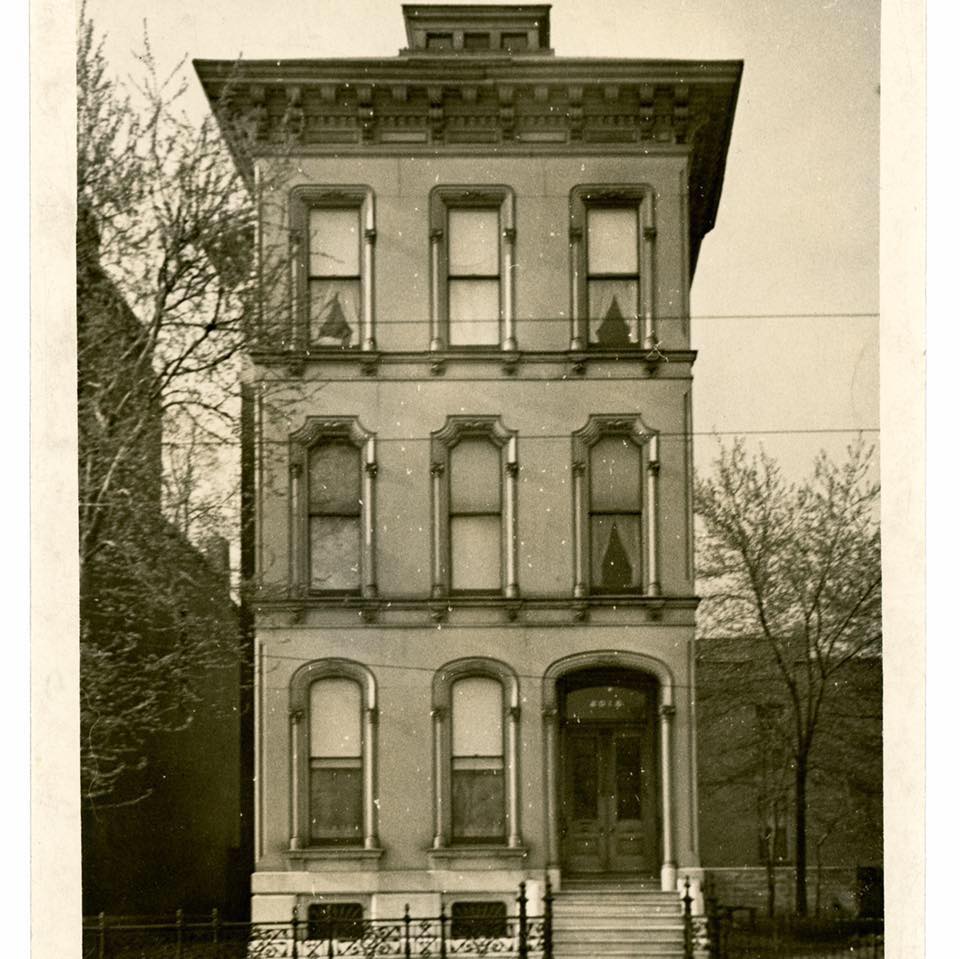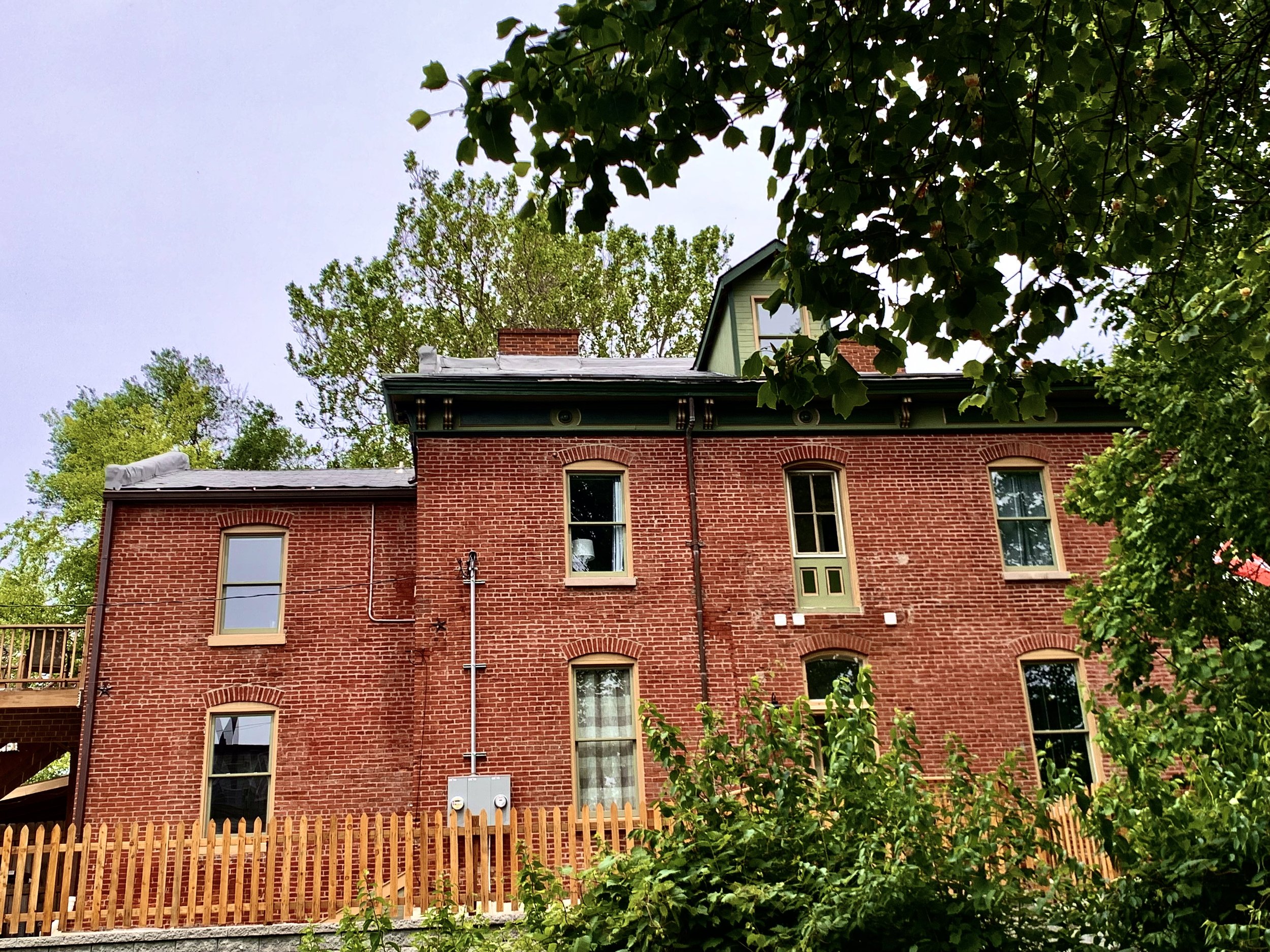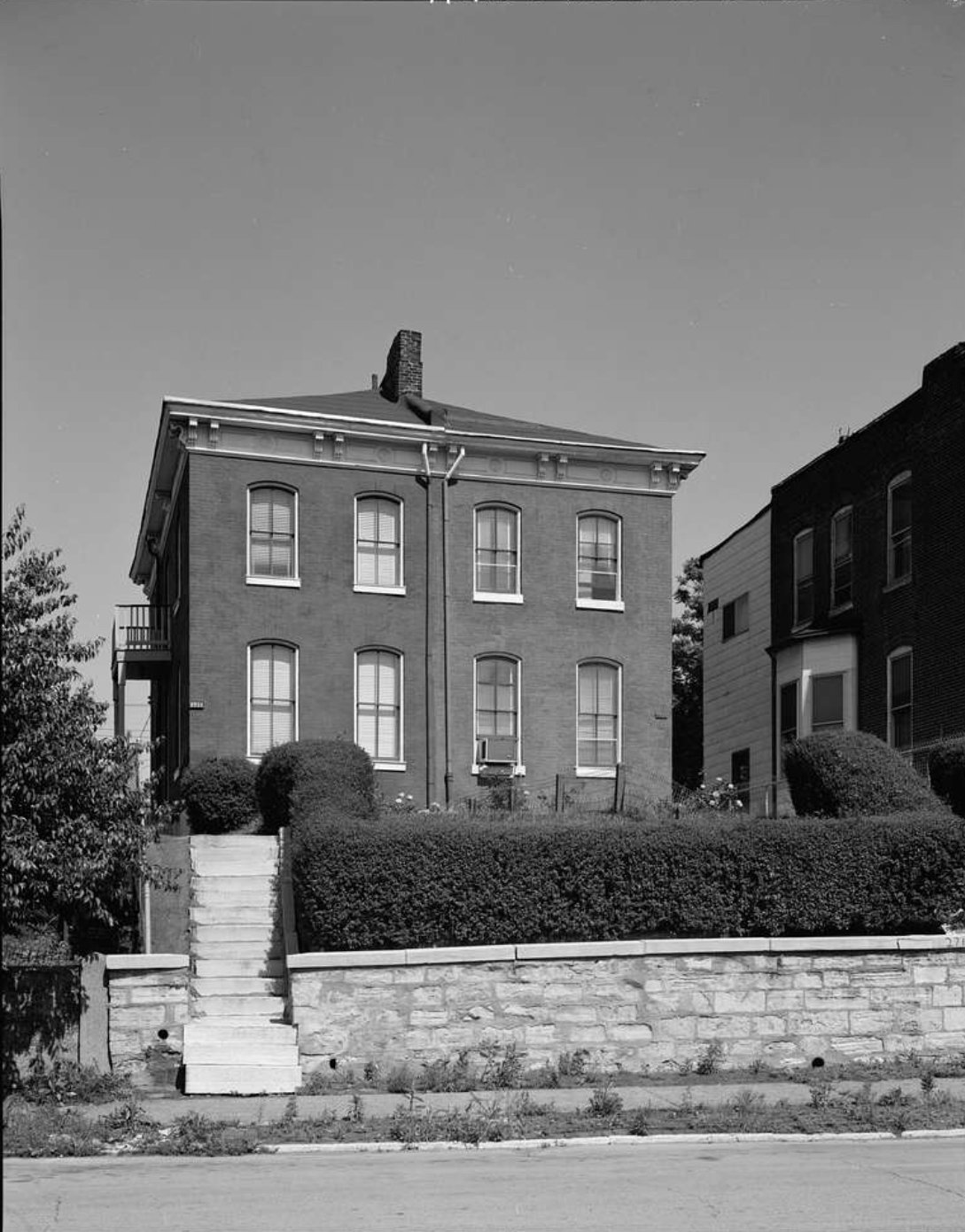2719-21 South 11th Street
Built: 1866
Style: Italianate Flounder
Neighborhood: Soulard
City Block: 792
Former address: 2719-21 Menard
On 1875 Compton and Dry Map: yes
On 1883 Hopkins Atlas: yes
Historical significance: This house was built in about 1866 in the old neighborhood of St. George, which was laid out by William Carr Lane in 1836 as a suburb to the south of St. Louis. Many of the wealthy St. Louisans began to build their homes on the hill overlooking the Mississippi in the 1860s in this area m, especially German immigrants who had made their fortunes in St. Louis. The earliest resident of this house was Frederick Leser, who was a cashier for the Corn Exchange Savings Institution when he was living here from 1866-1867. He was later the cashier for the Lafayette Bank. In 1879, the unit at 2719 was home to Archibald Gordon, a tugboat captain and a U. S. Hull inspector. He lived here until 1888 and then moved into Ripple Row on 12th Street before eventually moving to Lindenwood Park in 1892. In 1884, the address was changed from Menard to 11th Street to make it more consistent with the downtown street grid. From 1889 to 1900, the Rothweiler family was living here. Arthur was a painter, Bernhard was a laborer, and Louis was a machinist. William Bruder, a bricklayer, also lived here between 1898 and 1900. From 1903-1906, James Ryan, a laborer lived here, along with Philip Hetzel, a contractor, from 1904-1906. In 1908, Gustav Krieger, a laborer, lived here. From 1908-1912, it was home to William Schulter, a brewer and bottler, who probably worked at either Anheuser Busch, or one of the other breweries in the immediate area. Frank X. Kulla, a molder, was living here in 1913, followed in 1914 by William Meintrup, a painter.
2721 also had a diverse history of residents. In 1879, Michael Tolle, an engineer, lived at the address, before moving to the College Hill neighborhood the following year. Between 1887 and 1892, Robert L. Price, a deputy marshal, was the resident. In 1893, Frederick Margenthaler, a pipe fitter was living here, although only for that year. From 1894-1896, the Parsons family lived here. Glenn was a binder, Jackson was a student, and Robert was a carpenter. In 1898, it was home to Franz Bartsch and Paul Kraemer. Kraemer was a Secretary with Coopers’ No. 3. From 1899-1901, it was home to another cooper, Casper Carl. With Anheuser Busch next door, it is fitting that multiple brewers lived here in the early 20th century. Theodore Boehmer lived here in 1904, Louis Walter from 1904-1906, and Joseph Glader from 1904-1908. From 1908-1914, Valentine Tillian lived here, in 1909, Matthias Temme, in 1911, Joseph Zwicke, in 1912, Albert Haffner, and from 1912-1916, John Kohmann lived here. All of these men were brewers. Also at this time, Theodore Klopek, a butcher, lived here in 1909, and Otto Beyer, an engraver, lived here in 1911. The building was home to numerous different families over the years, and in 1960, it was considered significant enough to be photographed for the Historic American Buildings Survey.
Architectural significance: this house is a two family building, constructed from two flounder style houses sharing a wall in the center, with central fireplaces and a hipped roof. The building was constructed in the Italianate style, and features the defining bracketed cornice at the roofline. The building is also situated on a hill with a stone retaining wall and staircase leading up to the building. The retaining wall for 2721 was recently restored.
The area on the 1875 Compton and Dry Map
The area on the 1883 Hopkins Atlas
The house photographed by HABS in 1960.








